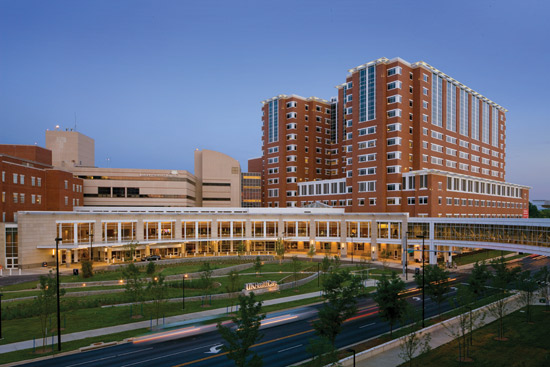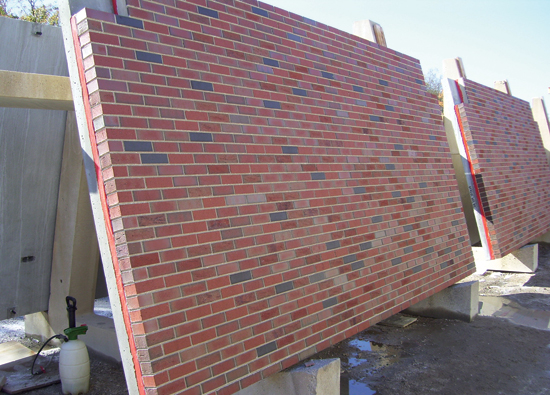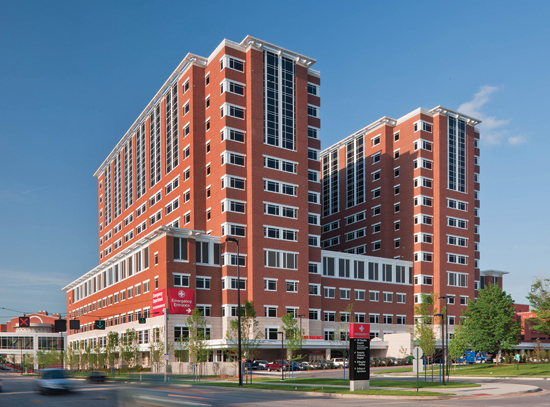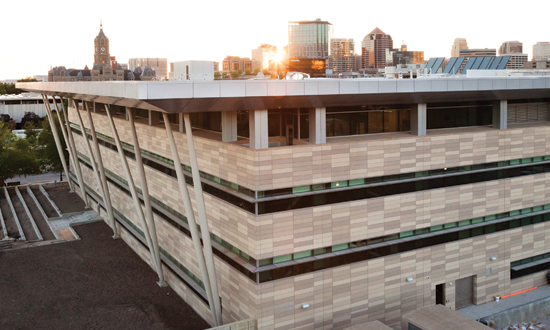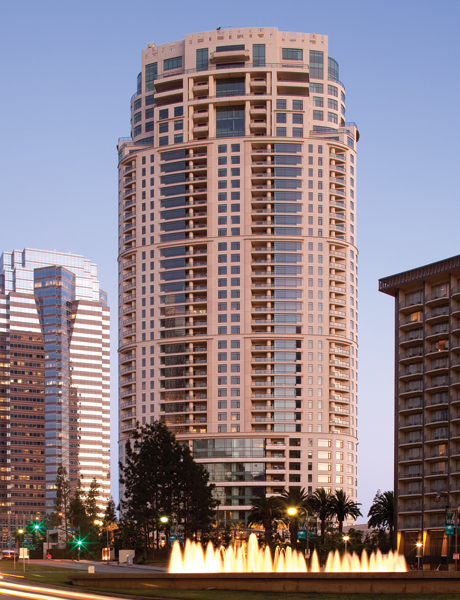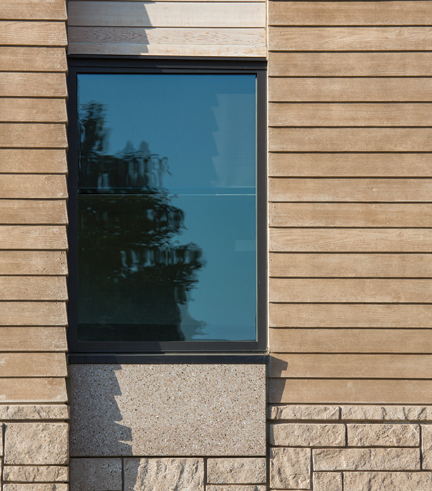Precast Concrete Life-Cycle Assessment and High-Performance Design
LCAs help architects design sustainable buildings
![]() Continuing Education
Continuing Education
Use the following learning objectives to focus your study while reading this month’s Continuing Education article.
Learning Objectives - After reading this article, you will be able to:
- Define the term high performance as it relates to sustainable solutions in the built environment.
- Discuss the contribution a life-cycle assessment (LCA) can make in understanding a material’s environmental impact and continued improvement in its manufacturing and use phases.
- Identify where the precast concrete industry is making improvements in the manufacturing process to reduce adverse environmental impacts.
- Cite the key findings of a third-party LCA on precast concrete that are relevant to sustainable design decisions.
Building owners, designers, and users are demanding that structures look great, perform better, provide multi-hazard protection, and do so sustainably. Enter the world of high performance. High-performance design and structures challenge us to optimize all relevant attributes, on a life-cycle basis for a project, and do so while minimizing negative environmental impacts.
To accomplish this, we must better understand the environmental impact of the materials and systems we use. Many manufacturers tout the sustainability of their products, yet very often their claims are unproven by scientific data. Government agencies, professional organizations, and corporations alike are seeking fact-supported methods of gauging the environmental impact of their products. So as sustainable design has evolved, so has the ability to better quantify and understand environmental impacts.
One approach that is gaining wide acceptance in the architectural and building community is life-cycle assessment (LCA). This tool gives business and industry the ability to look holistically at the environmental consequences of their products and to strategically address the environmental soundness of their operations—all with important implications for architects interested in specifying high-quality, sustainable building materials.
This article will discuss the definition of high performance as it relates to the building industry and how it contains attributes of sustainability. It will also discuss the components of an International Organization for Standardization (ISO)-compliant LCA, considered by many to be the gold standard of measuring sustainability and pinpointing areas for improvement. Also presented are the highlights and findings of this third-party LCA on precast concrete, as well as what those conclusions mean for the precast concrete industry as a whole, and for design professionals.
High-Performance Structures Defined
“High performance” is not an arbitrary term given to a structure that may have positive environmental features, it is a term that implies specific parameters that have been explicitly defined by law. The Energy Independence and Security Act of 2007 - 401 PL 110-140 proclaimed that a high-performance structure is one that “…integrates and optimizes on a life-cycle basis all major high-performance attributes including energy and water conservation, environment, safety, security, durability, accessibility, cost benefit, productivity, sustainability, functionality, and operational considerations.”
The 2007 law signaled a fundamental change in how green design is viewed. Sustainability, while a central aspect of high-performance buildings, was more specifically defined. No longer was sustainability merely a function of environmentally conscious design and construction, but performance on a life-cycle basis was a key and necessary component. While including the concepts and practices of sustainability, a high-performance building must demonstrate optimization of all relevant attributes of a project. Energy and water conservation, safety, security, and durability became requirements that must be integrated into a structure's overall design, construction, and performance.
For example, a parking structure will not have a huge energy component relative to a conditioned space building such as an office. However, both have energy requirements. The goal in high-performance design is to not forget, ignore, or otherwise overlook any of the relevant attributes in the optimization of the project. An important component to accomplishing this is to look at the interaction between systems and materials. For example, when you replace brick veneer with insulated precast concrete, how does this change affect the HVAC system, the construction schedule, or the indoor environmental quality, etc.?
The meaning of high performance thus became to design and build structures that optimize all relevant attributes on a life-cycle basis rather than a solely first-cost basis. With this criteria, high performance essentially became synonymous with life-cycle design—design for the long term. Critical to achieving this designation were high-performance materials and systems—integrated systems that allow for design versatility and are efficient, resilient, and can be optimized to meet the multi-hazard requirements and long-term demands of high-performance structures.
High-performance criteria have not only become important to building owners, but essential in meeting the standards of funding agencies and green codes, notably the new International Green Construction Code, LEED (v.4), ASHRAE 189.1, and the mandate by the U.S. Federal Government Executive Order 13514, which requires government buildings to achieve net-zero energy use by 2030.
Life-Cycle Assessment: A Scientific Approach to Sustainability
Life-cycle assessment is widely accepted as an objective and scientifically based determination of a product's environmental impact, based on examining a broad range of environmental impacts over its life cycle. All phases of a product's life, from cradle to grave, have an impact on the environment. These impacts can be quantified and compared through an LCA, which assesses those impacts from the time materials are extracted through manufacture, storage, use, recovery, reuse, and disposal, including all transportation required during a product's existence. All inputs and outputs (materials and energy used, and emissions to air, land, and water) of a specific material are assessed with respect to their impact on the environment. This information is used to improve processes, support policy, and provide a sound basis for informed design decisions.
There are several variations in the scope of an LCA. One of the most commonly used versions of the LCA is cradle-to-gate, which is an assessment of a partial product life cycle from resource extraction, or cradle, to the factory gate, or before it is transported to the consumer. The use phase and disposal phase of the product are omitted in this case. Often, cradle-to-gate assessments are the basis for environmental product declarations (EPDs), defined as “quantified environmental data for a product with pre-set categories of parameters based on the ISO 14040 series of standards, but not excluding additional environmental information.” EPDs have often been likened to a nutrition label for a product, but providing environmental instead of health information. Third-party verified reports published by manufacturers regarding the environmental performance of their products, EPDs can now contribute to a project's earning of LEED credits. While many architectural firms already require transparency from their product vendors, LEED v4 will accelerate this trend by awarding points for projects that use a certain number of products with EPDs.
Although cradle-to-gate EPDs are an incomplete sustainability assessment, in many cases they are the best assessment that product manufacturers can provide at this time. However, for many building materials and products, the overwhelming majority of adverse environmental impacts occurs during the use phase, but the use of a product isn't always known at the time it leaves the manufacturing facility. Thus, the use phase can be difficult to include in an EPD without making several assumptions about how the product may be used. Encouraging product manufacturers to provide EPDs can still provide some value, however, because oftentimes the product manufacturers identify environmental hotspots in their processes just from going through the exercise of performing an LCA and creating an EPD.
To get a true sustainability picture, some experts maintain that only the LCA of a building over its full life cycle can provide estimates of the full range of environmental burdens, such as embodied energy use and related fossil fuel depletion; other resource use; greenhouse gas emissions; and toxic releases to air, water, and land. This is important to better understand the overall net effect of our design decisions on the environment. When applied to buildings, an LCA includes the following phases: resource extraction; manufacturing and transportation of materials and prefabricated components; on-site construction; building operations, including energy consumption and maintenance; and end-of-life reuse, recycling, or disposal.
Life-Cycle Assessment of Precast Concrete
The Precast/Prestressed Concrete Institute (PCI) initiated a life-cycle assessment with Morrison Hershfield and the Athena Institute to investigate the environmental impact of precast concrete. In 2013 a “cradle-to-grave” LCA study relating to commercial buildings was completed. In broadest terms, a cradle-to-grave LCA evaluates the environmental performance of a building over its entire life cycle, which the study divides into manufacturing, construction, maintenance, operating energy, and end-of-life stages. This was a comparative study, examining the performance of precast concrete relative to alternative structural and envelope systems. The methodology employed in this study complied with international standards ISO 14040:2006 and ISO 14044:2006, considered to be the most rigorous for conducting life-cycle assessments.
The basis of comparison chosen for the study was a five-story commercial office building that provides space for 130 people and meets minimum building and energy code requirements. The service life of the building was assumed to be 73 years, the standard median life for large commercial buildings according to published literature. In conformance with international standards for comparative studies, the same fundamental design parameters, such as dimensions, column spacing, etc., were applied for all cases; the design of the comparison structure was not optimized for any of the structural and envelope systems evaluated. In all, the study evaluated 15 design cases consisting of five different building envelope systems combined with three different structural systems, as can be seen in the accompanying table (see the online version of this course). To allow for different climate conditions, the 15 cases were modeled in four U.S. locations—Denver, Memphis, Miami, and Phoenix. The case using precast concrete for both the envelope and structural systems (designated “P-P”) was defined as the baseline for comparison.
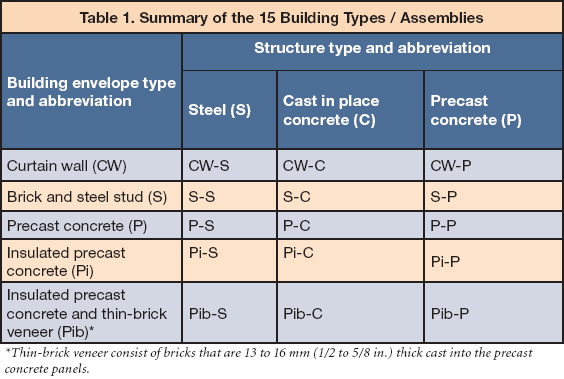
In addition to the comparative study, a sensitivity analysis was conducted to determine the extent to which environmental impacts would be affected by using double tees instead of hollow-core planks for floors.
Study Results
The study yielded three important results that have far-reaching implications for design professionals and the industry as a whole:
Building Environmental Performance Is Dominated by the Operating Energy Stage
Operating the building over its lifetime—that is, the use phase—was shown to have the greatest overall impact on the environmental performance of a building. In fact, more than 90 percent of the impacts relating to global warming, acidification, respiratory effect, eutrophication, photochemical smog, and total primary energy occur in the use phase. While the numbers vary somewhat among the four cities studied, in all cases at least 97 percent of the total primary energy (TPE) and 96 percent of the global warming potential attributed to the building over its lifetime occur in the use phase. This is a primary reason why environmental impacts should be evaluated over the full life cycle of a building.
Environmental Performance of Precast Concrete Buildings Is Competitive
The peer-reviewed study also confirmed a basic conclusion of most balanced LCA studies of commercial buildings, namely that there is presently not a significant difference in life-cycle impacts between steel, cast-in-place concrete, and precast concrete building systems. Although concrete is sometimes perceived to have a higher environmental impact due to energy use and carbon dioxide emissions associated with manufacturing portland cement, the fact is, as shown by this research, precast concrete does not impose additional environmental burden than other materials over the full building life cycle.
The following 10 environmental impacts were evaluated for each of the 15 building cases, in each of the four cities. To provide a simplified characterization, the following discussion focuses on the coefficient of variation (COV) of the results for the 15 building cases for each environmental impact. For detailed life-cycle impact assessment results, architects can refer to the full LCA report.1
• Global warming potential, total primary energy, acidification, respiratory effects, eutrophication, photochemical smog, and solid waste impacts. Within a given city, the COV of results for the 15 building cases relating to global warming potential, total primary energy, acidification, respiratory effects, eutrophication, photochemical smog, and solid waste was 2 percent or less. This means that for a given climate, there is little difference among the building cases for these seven environmental impact categories.
• Water use impact. Within a given city, the COV of results for the 15 building cases relating to water use was 14 percent, meaning that for a given climate, there is a notable difference among the building cases for water use impact. Water use in the operating energy stage is the same for all cases. However, buildings with steel structural systems—regardless of envelope system—have greater water use impact in the construction stage because they were assumed to employ masonry elevator and stairwell walls, which embody significant water use. Precast concrete's water use impact was generally less than steel construction and roughly equal to cast-in-place construction.
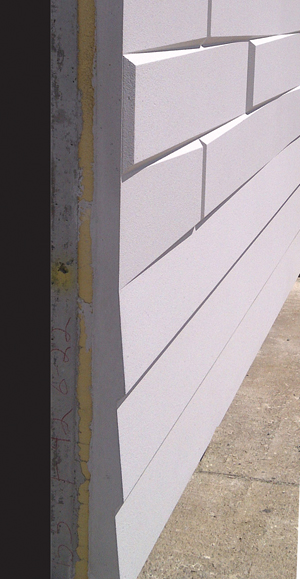
Photo courtesy of Gate Precast Company
Precast concrete insulated panels can provide edge-to-edge insulation meeting ASHRAE’s continuous insulation requirement, along with being a continuous air and vapor barrier. An insulated precast sandwich wall enclosure acts as a “rain barrier” rather than a rainscreen, offering greater protection from the elements and longer-term durability.
• Abiotic resource depletion. Abiotic resources are those resources that come from non-living, non-organic material such as land, fresh water, air, and metals. Within a given city, the COV of results for the 15 building cases relating to abiotic resource depletion was 36 percent, demonstrating that for a given climate, there is a great difference among the building cases for abiotic resource depletion. The majority of the abiotic resource depletion impact occurs in the manufacturing and construction stages. Regardless of city, the buildings with largest abiotic resource depletion impact were those with steel structural systems. Specifically, the manufacturing stage abiotic resource depletion impact of just the floors and roofs for buildings with steel structural systems was greater than that for the entire building for either cast-in-place or precast concrete structural systems.
• Ozone depletion. The COV of results for the 15 building cases relating to ozone depletion varied from 0 to 15 percent, depending on the city. This means that the difference among the building cases for ozone depletion depended on climate. Most ozone depletion impact results from the use of extruded polystyrene (XPS) insulation. Use of XPS in roofs, which is relatively consistent for all building cases in this study, is the primary driving factor. All the buildings in the study have XPS insulation in the roof, and during the maintenance stage, when the roof is replaced every 20 years, the insulation is also replaced. Over the life of the building, more XPS insulation is used in the roofs of all buildings than is used in the walls of the buildings with cast-in-place or precast concrete envelopes. However, XPS is also sometimes used in concrete walls (both cast-in-place and precast). This means that in climates where wall insulation is used (for this study, all cities except Miami), the concrete-wall building cases had greater ozone depletion impacts. For Miami, there was essentially no difference among the building cases for ozone depletion.
Continuously Improving—The Environmental Performance of Precast Concrete
Although manufacturing stage impacts are a small percentage of the overall environmental impact of buildings, one goal of the LCA study was to identify manufacturing stage impacts for the constituent precast concrete elements (hollow-core slabs, wall panels, columns, beams, double tees). This is important to the precast concrete industry, so that it can continuously improve any environmental hot spots in its manufacturing processes. Unpacking this data revealed some minor differences—about 6 percent—among the various element types. Overall, the LCA revealed a few key environmental hotspots in the manufacturing stage impacts for all precast concrete element types including use of portland cement, which accounts for the majority of the environmental impact in most categories, and plant energy used in the fabrication process. This accounts for 23–25 percent of the total primary energy and 13–14 percent of the global warming potential for the manufacturing stage.
What it All Means
This third-party LCA study provided the precast concrete structures industry with a better understanding of the life-cycle environmental performance of precast concrete relative to alternative structural and envelope systems for mid-rise office buildings. Key results will be broadly useful in improving the environmental performance of precast concrete buildings as well as in informing the design community of the environmental impact of the material.
What It Means to Design Professionals
Specifiers should note that, as shown by this research, precast concrete structural and envelope systems perform just as well as competing systems in terms of environmental impacts. Hence, material and system selection can be based on the inherent attributes and benefits of the individual material or system. Precast concrete inherently offers many high-performance attributes, and is being used to help projects meet and exceed their high-performance goals during design, construction, and operation. Therefore, the benefits of precast concrete can be utilized to meet high-performance goals without any more environmental burden relative to other materials and systems.
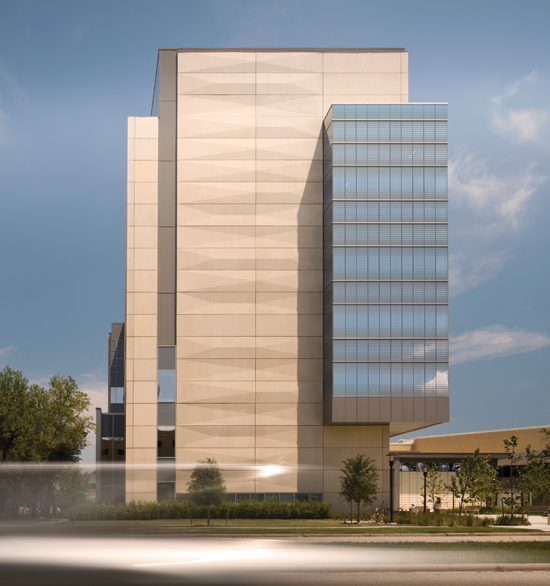
Photo by Nic Lehoux
The aesthetic and structural versatility of high-performance precast allows for many forms, textures, and finishes.
What it Means to the Industry
The study highlighted several areas where precast concrete producers can and are already reducing their environmental impact. As portland cement represents the bulk of negative environmental impacts, manufacturers are already working with alternatives. The amount of cement used in precast concrete is only about 15 to 20 percent by weight, but may be reduced substantially through substitution with supplementary cementitious materials. The amount of cement substitution possible is affected by the mixture design requirements, the products and processes of individual precast concrete manufacturers and plants, and the local availability of materials. Energy and water usage as well as waste during the manufacturing process have been another area for improvement. For example, many precast manufacturers have installed water reclamation systems so all water is recycled. This information is being used in PCI's Sustainable Plant Program, which focuses on continuous improvement of the environmental impact at the manufacturing level while reinforcing a culture of sustainability within the industry. The program includes an automated tracking tool to help plants establish a benchmark or baseline measurement of its energy and material consumption, and the associated global warming potential.
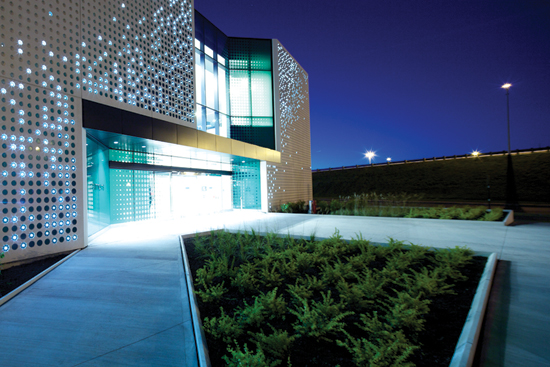
Photo © Marc Cramer
An example of precast concrete versatility, these precast concrete panels were embedded with LED lights to make this dramatic entrance.
Achieving High Performance, Sustainably
The idea of high-performance buildings provides an overarching concept that includes sustainability, as well as many other important attributes. High-performance buildings are defined as buildings that integrate and optimize all relevant high-performance attributes on a life-cycle basis. An important part of this is to achieve these goals without an increased environmental burden, or in other words to achieve them sustainably.
The benefits of sustainable business practices are well documented. The financial payback of green building practice is measured in operating and maintenance savings over time offsetting the initial costs of sustainable features. While the payback varies from project to project, depending on sustainable features and availability of materials and expertise of the design team, it is widely considered that green buildings need not cost more than conventional buildings. The ability to design and construct green buildings, in fact, has become increasingly valuable as rising energy costs and concerns about environmental impacts have prompted the evolution of green building programs as well as state tax credits for green public buildings and large corporations' insistence on sustainable design to reduce operations and maintenance costs and bolster their public image.
To this end, LCAs can be helpful in achieving high-performance goals. LCAs provide a research-based solution to the question of which materials represent the most sustainable choice in a given situation. In the case of precast concrete, the comprehensive LCA shows that there is presently not a significant difference in life-cycle impacts between the materials evaluated. This allows designers and owners to utilize the high-performance attributes of precast concrete to meet high-performance goals without any more environmental burden relative to other materials and systems.
The research made available in LCAs has far-reaching implications for both manufacturers and specifiers. Precast concrete manufacturers have used this data as an opportunity to make improvements in specific areas of their process, continually improving their plant practices in areas that constitute the greatest environmental liability. Architects, too, have a fact-based rationale for specifying products that can contribute to a building's overall sustainability and meet their high performance goals. A rigorously developed LCA, then, is in an unprecedented position to bring true sustainability to the built environment.
ENDNOTE
1. For further information contact SustainabilityPrograms@pci.org.
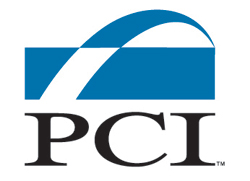 |
PCI develops, maintains, and disseminates the body of knowledge for the precast/prestressed concrete structures industry. PCI provides technical resources, certification, and education, as well as conducts industry events, research and development, and more. www.pci.org |

